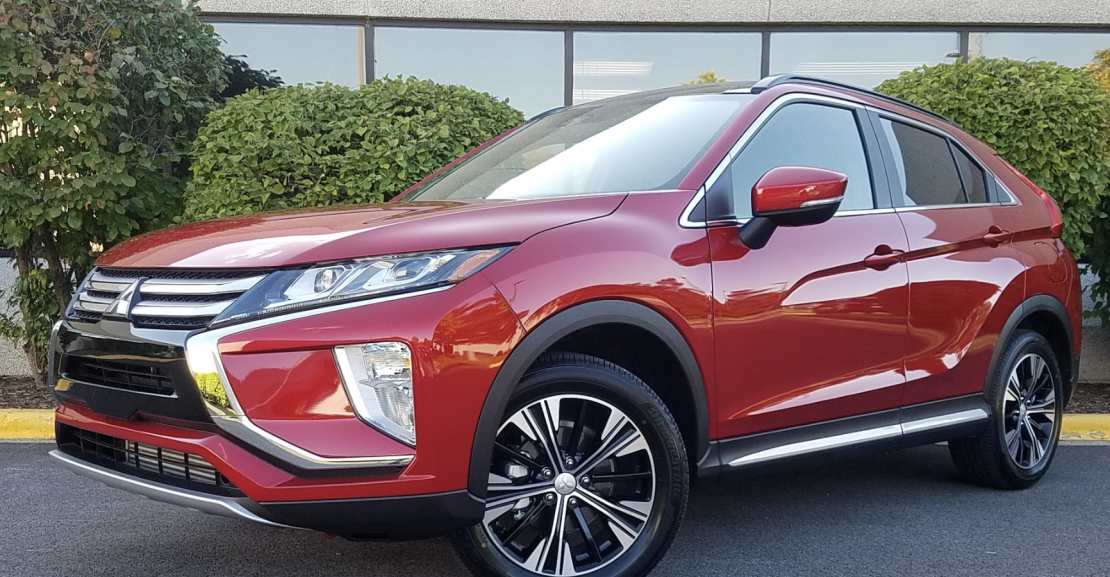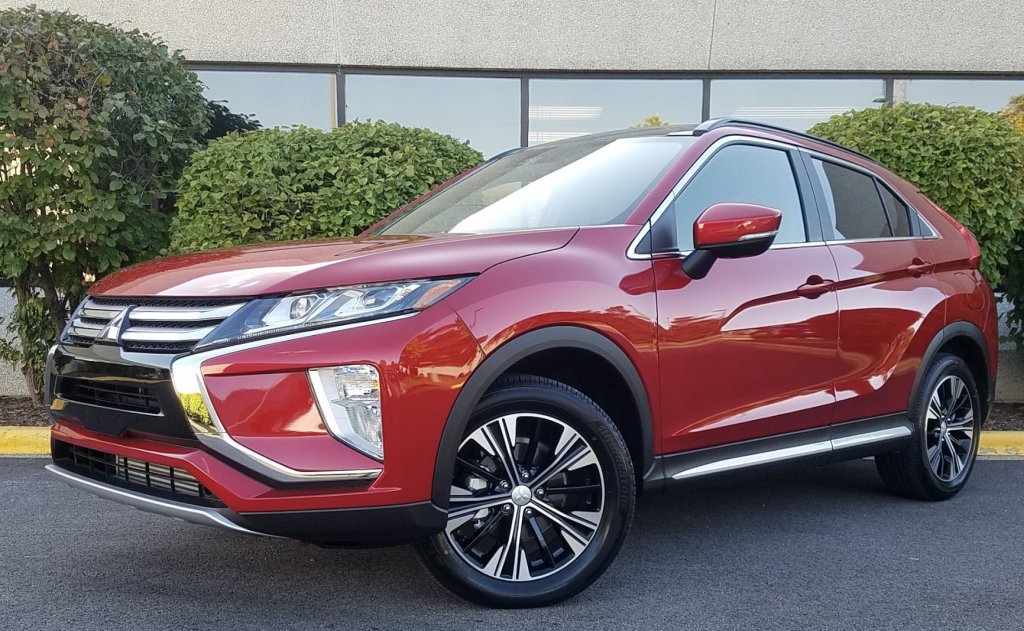
 2020 Mitsubishi Eclipse Cross SEL
2020 Mitsubishi Eclipse Cross SEL
Class: Compact Crossover
Miles driven: 500
Fuel used: 18.6 gallons
| CG Report Card | |
|---|---|
| Room and Comfort | B |
| Power and Performance | C+ |
| Fit and Finish | B- |
| Fuel Economy | B |
| Value | B- |
| Report-card grades are derived from a consensus of test-driver evaluations. All grades are versus other vehicles in the same class. Value grade is for specific trim level evaluated, and may not reflect Consumer Guide's impressions of the entire model lineup. | |
| Big & Tall Comfort | |
| Big Guy | C+ |
| Tall Guy | B |
| Big & Tall comfort ratings are for front seats only. "Big" rating based on male tester weighing approximately 350 pounds, "Tall" rating based on 6'6"-tall male tester. | |
| Drivetrain | |
| Engine Specs | 152-hp 1.5L |
| Engine Type | Turbocharged 4-cylinder |
| Transmission | CVT automatic |
| Drive Wheels | AWD |
Real-world fuel economy: 26.9 mpg
Driving mix: 25% city, 75% highway
EPA-estimated fuel economy: 25/26/25 (city, highway, combined)
Fuel type: Regular gas
Base price: $28,595 (not including $1095 destination charge)
Options on test vehicle: Premium paint ($595), Touring Package ($2100), tonneau cover ($190), carpeted floor mats ($145)
Price as tested: $32,720
Quick Hits
The great: Unique styling
The good: Available high-end features
The not so good: High-tech safety features only offered on top-line models
Tom Appel
Mitsubishi added the Eclipse Cross to its portfolio of crossovers for 2018, which we covered with both a First Spin report and later – in top-line SEL trim – with a Test Drive review.
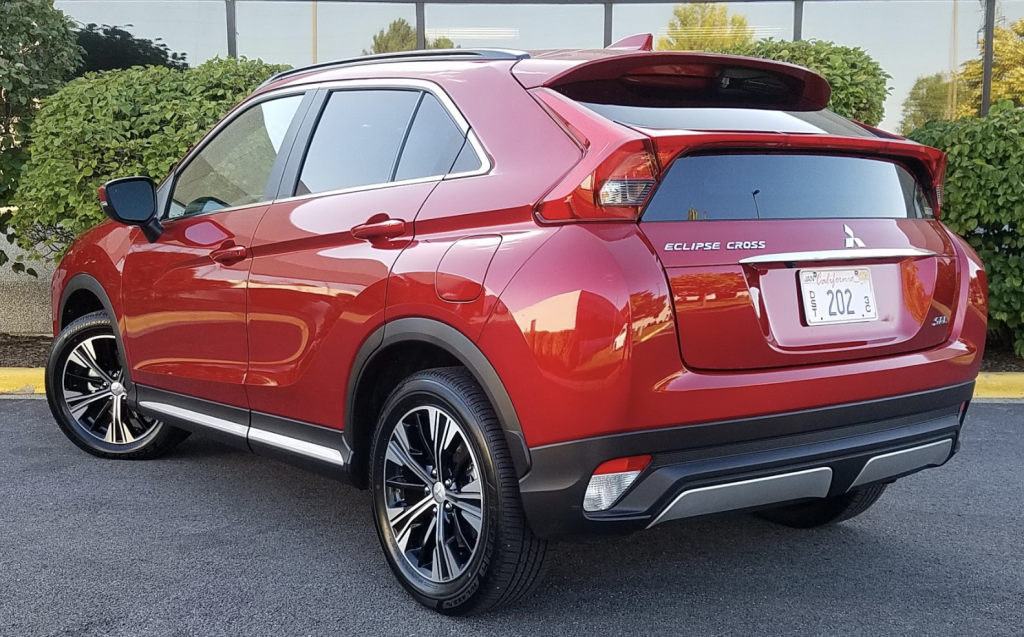
We again tested an Eclipse Cross SEL for 2020, and as it hasn’t changed significantly since 2018, we invite you to read our 2018 Test Drive review for more details … and the First Spin for info on other trim levels.
But that’s not to say the Eclipse Cross hasn’t changed at all. For 2019, an SP version was added as a mid-level offering that brought a rear spoiler and front/side/rear air-dam extensions. What’s new for 2020 is that all trim levels – ES, LE, SE, and SEL (the SP being discontinued midyear) – now come standard with front-wheel drive (previously, only the base ES did), with Mitsubishi’s Super All-Wheel Control (S-AWC) all-wheel-drive system adding $1600. Also, both the penultimate SE and top-line SEL now come standard with forward-collision warning and mitigation with pedestrian detection (mitigation only functioning below about 50 mph) along with lane-departure warning, two rather basic high-tech safety features that – oddly – only came in the SEL’s optional Touring Package last year. Continuing as standard on those two trim levels are blind-spot alert with lane-change assist and rear cross-traffic alert, with the SEL’s Touring Package adding high-speed forward collision mitigation (functioning up to about 85 mph) and adaptive cruise control. And that’s the version we again tested.
Quick Spin: 2019 Honda CR-V Touring
More and more small crossovers are going with CVT automatic transmissions these days, and a few have small, turbocharged engines. The Eclipse Cross has both – a combination that often exhibits some unusual driving characteristics.
While that’s the case here, the combination works well enough. The little turbocharged engine provides a decent full-throttle jump off the line (not always the case with small turbos) and the transmission kicks down fairly quickly when the throttle is pressed while underway. But the transmission also exhibits some of the traditional CVT “rubber band” effect in normal driving, though it’s not so much annoying as just noticeable.
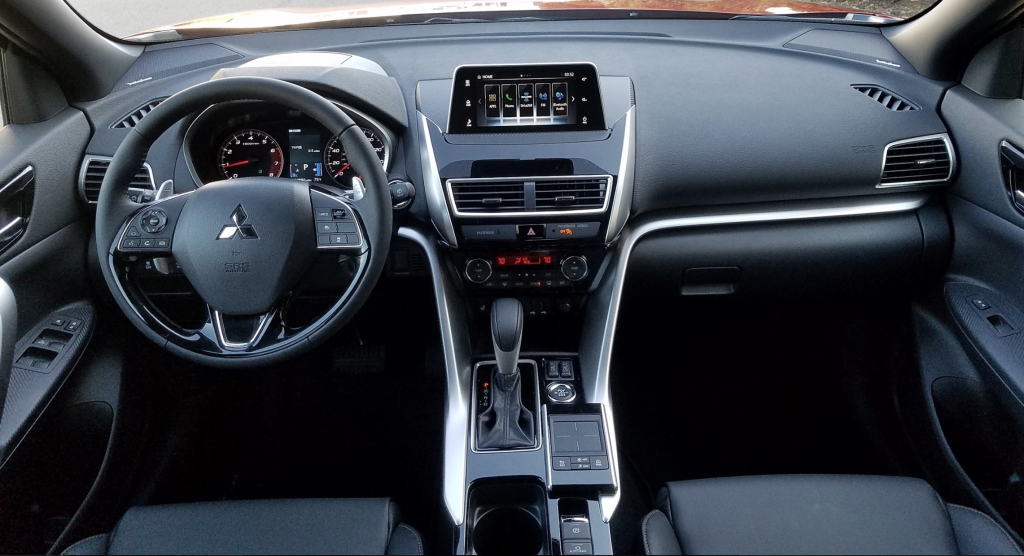
One thing noticed upon entry – particularly to the rear seat – is that door closings sound kind of “tinny.” While the front seats felt fine, a couple people commented that the rears felt somewhat hard, though the seat backs recline for more comfort, and overall passenger space is decent for all but the big and tall. Cabin storage space is also reasonably good, as is visibility – aided on our tester by a 360-degree camera system activated by a handy steering-wheel button.
Test Drive: 2019 Mazda CX-5 Signature AWD
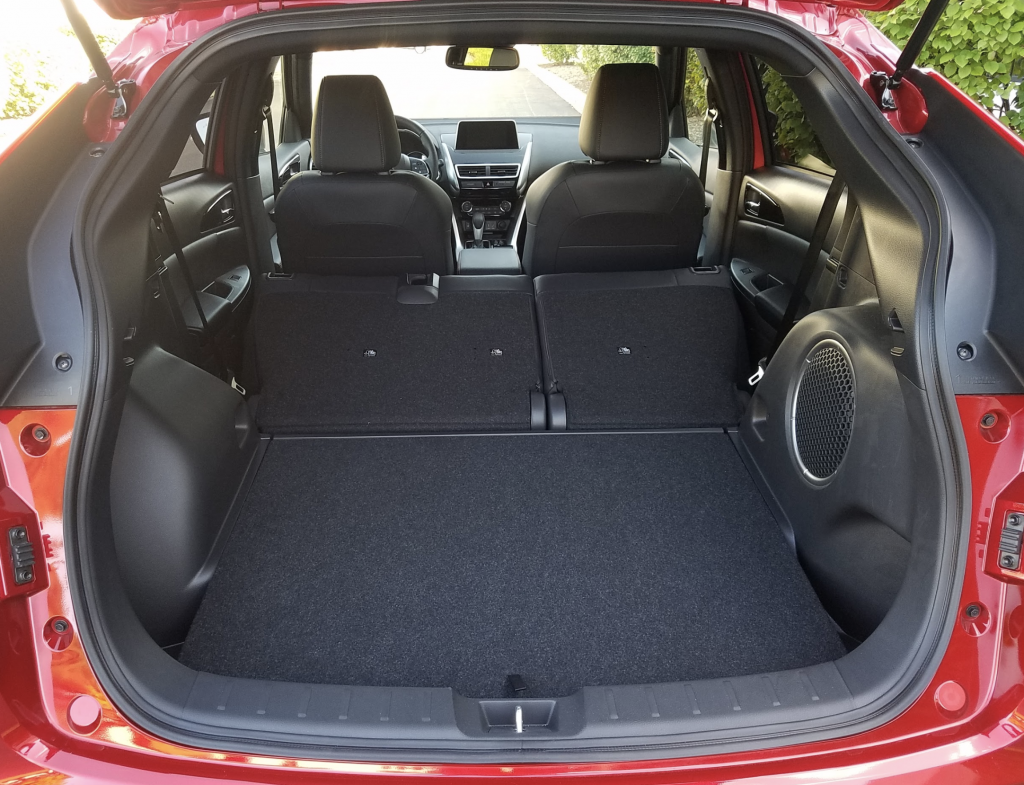
Cargo space in back is also good, and while the folded rear seat backs don’t lay quite flat, at least they rest level with the cargo floor. There’s just a little bit of “hidden” space under the floor.
Test Drive: 2018 Subaru Crosstrek Limited
We commented before that the console touchpad seemed to be more of a gimmick than helpful, but at least you can also use the touchscreen to input infotainment commands. Really appreciated by some drivers was the head-up display, a neat and unusual feature for the class.
It used to be that the Eclipse Cross was woefully far behind in offering high-tech safety features, at least on anything but the very top-line model with an option package – a combination that pushed the price past 31 grand. And while that’s where this test vehicle sat as well, many of those features have been added as standard on the SE and SEL trim levels for 2020, with an AWD SE listing for about $28,000 – a somewhat more palatable figure.

Every vehicle has its competitive strengths, and those of the Eclipse Cross include styling (subjective, of course) and the availability of some neat and unusual features, such as the head-up display and instantly accessible 360-degree camera system. It also gets Mitsubishi’s terrific and rather unheralded 5-year/60,000-mile bumper-to-bumper warranty with 10-year/100,000-mile powertrain coverage. But the neat features mentioned above are only offered on the top-line model, which leaves the line as a whole somewhat behind our top picks in the category.
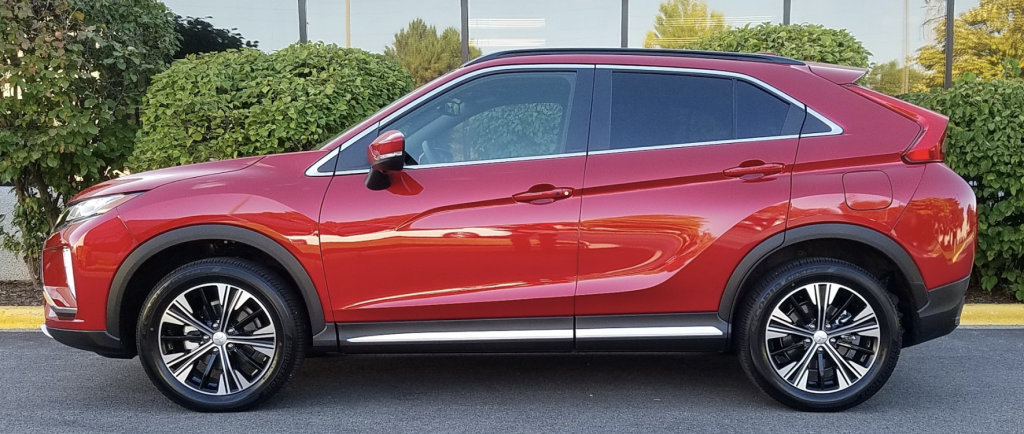
Check out our Compact Crossover Best Buys
Check out the Consumer Guide Car Stuff Podcast

